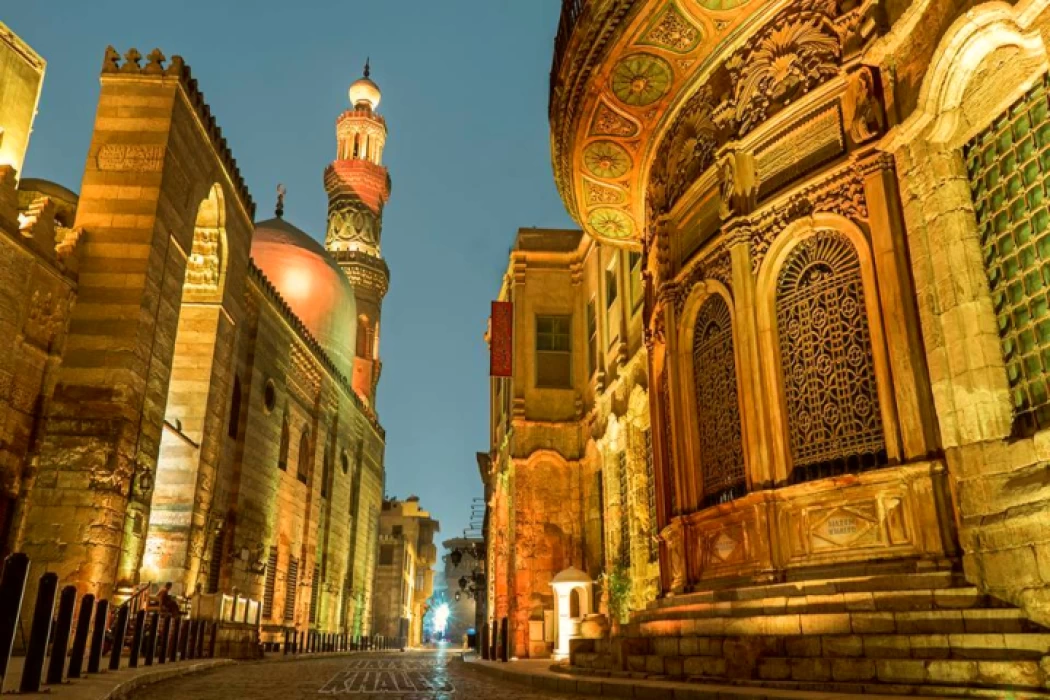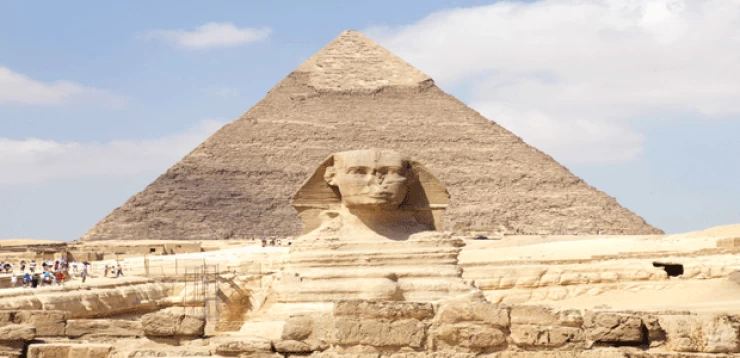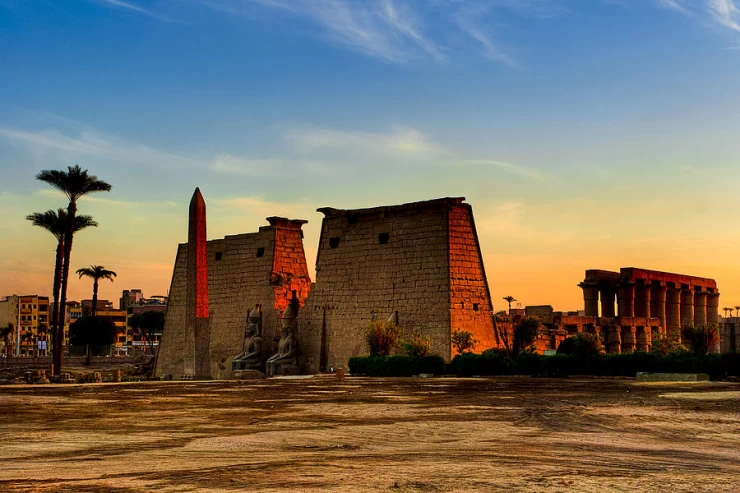
Know more about Complex of Qalwoon
The Sultan Qalawun collection or the mosque, madrasa, dome, and Bimaristan of Mansur Qalawun is a famous archaeological architectural ensemble of Cairo, built in the Mamluk Islamic style. Its establishment was ordered by Sultan Al-Mansur Saif al-Din Qalawun, one of the most prominent Sultans of the maritime Mamluk era, who founded a dynasty that ruled Egypt and the Levant and others for more than a century, its rule began by himself in 678 Ah/1279 AD, and ended with the good Sultan Salah al-Din Haji in 784 Ah/1382 ad, and he is credited with the emergence of the second Mamluk state (the tower or jaraxa Mamluks) as he was fond of buying large numbers of the towers of the castle are therefore called the tower.
Adjacent to the group are several Islamic monuments, next to which are located the mosque and Madrasa of Nasser Qalawun, the mosque and Madrasa of his Khanqah Al-Zahir Barquq.
Originator
When Izz al-Din Aybak killed Prince Faris al-Din aktai, the leader of the maritime Mamluks, Prince Qalawun came out of Egypt, and whoever came out of the maritime Mamluks went to King Nasser Yusuf of Aleppo, so he prepared them for that Sultan Al-Mu'izz Izz al-Din Aybak, and after he killed and deposed his son Al-Mansur Ali, and Sultan Al-Muzaffar qatz, Qalawun and Baybars Al-bandaqdari and with them returned to Egypt and contributed a great role alongside Sultan qatz in the Battle of Ain Jalut against the Mongols in 656 Ah/1258 ad.
After the murder of Sultan Al-Muzaffar qutz by Baybars Al-bandagdari, Baybars sat on the throne of the Sultanate and was nicknamed Al-Zahir Baybars, and during his reign, the status of Qalawun Rose, and when Al-Zahir Baybars felt the increasing influence and greatness of Qalawun's position in the state, he feared for his plans that were aimed at succeeding his son Muhammad Baraka Khan after him, he sought to document his son's relationship with Qalawun by consummating his son's marriage to ghadiya Khatun, Qalawun's daughter in 674 Ah/1275 ad, thinking that Qalawun would not covet to snatch the king from his son-in-law. When Al-Zahir Baibars died in 676 AH/1277 AD, the Princes renewed their allegiance to his son, Sultan Muhammad Baraka Khan so What a beautiful Sultan said, accompanied Qalawun, and did not take care of his kinship rights, and the dispute between the Sultan and his kin.
The Mamluks increased after a group of Mamluks approached him as juveniles and launched their hand in the management of State Affairs, and increased the interference of the private Mamluks in the distribution of fiefs, and also counted on getting rid of the Salih Mamluks who resented his actions and imprisoned some of them. When the dispute developed, the Princes besieged the castle and insisted that the Sultan remove himself, so he did and asked to be given the Karak, and they answered him to that.
The engineer
He mobilized three hundred prisoners to the architecture, as well as mobilized all the industrialists and ordered them to work in this architecture and prevented them from working in others, then he baptized Saleh Najmuddin Castle in Al-Rawda and transferred from it what he needed of granite columns, marble and others.
The position of shad al-Amara, or supervisor of architecture, was chosen for him by a prominent figure from among those familiar with engineering and construction matters and those with honesty, honesty and good policy, and his duty was to take care of the interests of the endowment and the deserving, renovate and repair the endowment buildings, and supervise the employers of various industries in the buildings and urge them to work.
The great soil of Mansur Qalawun and its tomb After the removal of Sultan said Muhammad, the senior princes offered the Sultanate to Qalawun, and he showed foresight and intelligence that he refused to answer their request and declared that he did not covet the king, and that what happened was only to preserve the order, the state and the armies of Islam, and that the first was to get the Sultan out of the offspring of the apparent Baibars, and the Princes agreed to take over Badr al-Din salamish at the age of seven and he acted in matters of governance for three months, until the opinion settled on the deposition of Sultan Al-Adil salamish and his exile with his brother Khader to the Karak fortress, and Qalawun sat on the seal of the Sultanate In the month of Rajab 678 Ah/1279 AD, he strengthened his position by assigning major positions to his khoshdash and subdued those who rebelled against him in the Levant, and during his reign he was able to achieve many internal reforms and external victories, as well as his good qualities and good qualities, and the country's political, economic, social and artistic conditions revived during his reign.
Qalawun was founded by a family that ruled Egypt, the Levant and others for more than a century, whose rule began by himself in 678 Ah/1279 AD, and ended with the good Sultan Salah al-Din Haji in 784 Ah/1382 ad, and only three sultans ruled in that period from outside the Qalawun family, namely kutbga, Lajin and Baybars Al-jashankir, their reign was all five years, and they were all Mamluks of Qalawun himself. Thanks to Qalawun in the emergence of the second Mamluk state (the Burj or jaraksa Mamluks), as he was fond of buying large numbers of the jaraksa Mamluks and inhabited the castle towers, so they were called burjais, and he took care of their upbringing and preparation until he became dependent on them in war and administration.
History
The Archaeological Collection is currently located on Al-Mu'izz al-Din Allah al-Fatimi Street in the bin Qasrin area, which dates back to the Fatimid State era, because it is located between two palaces, the large eastern one belonging to caliph Al-Mu'izz al-Din Allah and the small western one belonging to caliph Al-Aziz Allah ibn al-Mu'izz. the Hadith Kamiliya school. In the eighth Hijri/fourteenth century AD, the name between the two palaces was used due to the establishment of the palace of Prince Besri and the palace of Prince Beshtak towards it. The street between Kasserine used to hold ten thousand soldiers, and since the establishment of the Ayyubid state, it has become a place for the most important Cairo markets and a place for communities to read biographies, news, chant poetry, and master the types of games and amusements.
The collection was erected on a part of the land of the Western Fatimid Palace, it was originally a large hall for the sixth king, the daughter of the Caliph, then it became the favorite King Qutb al-Din Ahmed bin Sultan Al-Mansur Qalawun took it from her and replaced it with the Emerald Palace with the welcome of Bab al-Eid. The Bimaristan is the reason for the creation of the group, because when Mansur Qalawun was a prince who fell ill in Damascus and was treated with medicines taken from the Bimaristan of Nur al-Din the martyr, and when he was cured, he visited the Bimaristan and was impressed by it and vowed that God, the king of Egypt, would build a Bimaristan with it.
There is another version that says that the sultan ordered his Mamluks to put the sword in the commoners to order that the Sultan's thoughts should change, because they violated his order in something by their ignorance, so he ordered to kill them, so the sword played on them for three days in which countless were killed, and when the matter exceeded its limit, the judges and scholars looked to the Sultan and interceded other kings may Allah atone for what he has done to people, so that the good things may go away the bad.
The construction of the collection took fourteen months in the period between Rabi al-awwal 683 Ah / 1283 ad and Jamadi al-awwal 684 Ah / 1284 ad and those dates were engraved on the main threshold with the following: "He ordered the construction of this great dome, the Blessed Madrasa, the Blessed Bimaristan, the Blessed Maulana the great Sultan, King Mansur Saif Al-Dunya, and the religion Qalawun al-Salhi, and the beginning of the construction of it was in the spring of the other year eighty-three and six hundred, and the completion of it in the first Jamadi year Eighty-Four and six hundred.
However, the greatness of the size of the collection and the abundance of its decorations and accuracy made historians doubt those dates, and they assumed that those dates were written when the building block was completed and the destinations were not decorated, and their doubts were reinforced by the difference of historians in the date of burial of Mansur Qalawun with his dome, where many of them stated that he was buried the day after his death, while Ibn al-Furat also mentioned that al-Mansur Qalawun died on 6 Dhu al-Qa'ada 689 Ah/1290 ad and was carried to the mountain fortress and continued there until the last day of the first Muharram 690 Ah/1291 ad.
From these accounts, it is understood that the completion of the construction of the collection and its decorations was in the first year 690 Ah/1291 ad, and thus it took seven years and eight months, and it is possible that the madrasa and the Bimaristan performed their functions in part of the construction before it was completed, as was customary at that time, as happened in the mosque of Al-Mu'ayyad Sheikh, it was reported that in the year 686 Ah/1287 ad, judge Burhanuddin Al-Sinjari sat down to rule in the mansuriyya madrasa, and in the month of Ramadan 684 ah, the well-known the son of Abi halika to teach medicine in Bimaristan.
Historians have described Bimaristan as a complete Bimaristan and a medical school with a full pharmacy dedicated to treating ALL diseases, it had departments for Ophthalmology, surgery, internal and mental diseases, gynecology, all internal and external, and it dispensed medicines and food for those being treated at home, and the Bimaristan continued to perform its function until 1856, where it degenerated, only the insane remained, who were later transferred from it to the AL-jukh workshop in Bulaq, then transferred to Abbasiya in 1880, then the Bimaristan turned to treat all diseases, then in 1915, the Ministry of Awqaf established a hospital for the treatment of eye diseases in a section of Bimaristan, which remains to this day. One of the things that affects Mansur Qalawun is that when he visited Bimaristan after his leisure, he took a cup of Bimaristan drink and drank it and said, "I have stood this over like me, without me, and I made it stand over the King, The King, the male, the female, the big, the small, the free, the slave, the soldier and the Prince.
Design
The facade of the collection included portable contracts on marble columns inside which windows are hollowed out with geometric shapes with a frieze inscribed with the name of the creator, his surnames and the date of construction, and ending from the top with a serrated balcony locally faced with ornaments, which is an unusual facade in the buildings of Egypt, showing Syrian influences. On the seaward side there is a lighthouse consisting of three floors, the lower and middle are two squares, with windows opened with various contracts, the third is round with fine inscriptions and inscriptions in plaster crowned with an Egyptian-style cornice, but its helmet is not one of them, and archaeologists believe that it was a special Polygon .
The facade is centered on the main door, which is veneered in colored marble, and on its wide open copper cladding with geometric drawings, and its two speakers are in the form of an animal's head. This door leads to a vestibule with a wooden ceiling, on the sides of which opposite doors and windows of the dome and the madrasa opened, and ends with a door leading to the Bimaristan. The dome has two open doors on this vestibule, the first leads directly to it, and the second leads to the hall in front of it,
Prince Abdul Rahman katkhada demolished the large outer dome in 1174 Ah/1760 ad, and it was rebuilt by the committee for the preservation of Arab antiquities in 1326 Ah/1908 ad, and its design is somewhat adapted from the design of the dome of the rock in Jerusalem, the base is square, the center of which was erected four huge granite columns facing the gilded crowns, and four shoulders of construction at the corners of each four marble above it is a round window, and the sides of the Octagon were opened by candelabra windows of stucco and stained glass, surrounded by decorations and then a wooden stalactite dome, and the area around the Octagon was covered with gilded wooden ceilings.
The walls of the dome, the window openings and the surrounding cupboards are decorated with marble inlaid with shells, and it is considered one of the finest marble works, As for the dome mihrab, it is the largest and most luxurious mihrab in the Antiquities of Egypt; each of its sides is surrounded by three marble columns, and its cavity has four layers of gilded conch cavities mounted on graceful columns and the rest of marble and fine shell.
from the floor of the dome to its top, he sees only bright color and bright gilding, stained-glass windows, sweetened nodes with lush stucco ornaments. In the center of the Octagon is a tomb with the remains of a coffin of wood engraved and written in Kufic and Naskh script, and includes octagonal fillings
In 1231 Ah/1816 AD, one of his spectacles erected two marble witnesses, one with an Ottoman turban with a golden feather and the other with verses of poetry. This octagon was surrounded by a wooden compartment decorated with inscriptions and writings ordered by Nasser Muhammad ibn Qalawun, and the western facade of the dome was decorated
Attached to it was a library and a museum for preserving the clothes of those buried in it, which is the third museum for preserving the remains of the great in Islamic antiquities after the Museum of Uqba Ibn Amer in his mosque and the Museum of the dome of Saleh Najm al-Din Ayyub. In front of the dome door is the door of the school, and it was vandalized, so the committee for the preservation of Arab Antiquities worked to repair its eastern Iwan, an Iwan with a special system unprecedented in Egypt, it was erected on its opening two columns carrying two large knots, each of which is surrounded by two rectangular knotted holes, topped by a round window shrouded by two shoulders each with three windows on top of each other.
This Iwan is divided into three corridors, the middle of which is the largest, and its ceiling is mounted on marble columns topped with contracts, along with round windows decorated with stucco decorations, and there are opposite cupolas facing the legs of the contracts on top of the columns. The middle section of the Iwan is covered with a flat roof and was originally covered with a knotted vault. The Qibla mihrab is less luxurious than the dome mihrab, and its energy and its expanses of gilded mosaics are adjacent to a simple pulpit, which is not the original pulpit, but from the works of Prince Azbek from the year 899 AH/1494 AD. As for the Western Iwan, it was destroyed, its features were lost, repairs were carried out to maintain it, and a path.
Restoration
The group's Lighthouse fell following an earthquake in 702 Ah / 1302 ad, so Sultan Al-Nasser Muhammad Bin Qalawun established it in 703 Ah/1303 AD by Prince Saif al-Din Kahradash Al-Mansouri, and the Octagon surrounded the dome with a wooden compartment decorated with inscriptions and writings, and his name was written on it
The current pulpit was added to the Qibla Iwan by Prince azbek from Takh in 899 Ah/1494 ad, and he also added a dome above the fiskiya that was in the nave. In the year 1174 Ah/1760 ad, Abdul Rahman katkhada made changes to one of the dome doors leading to the hall in front of it, and to the school door opposite it, the two main doors, and demolished the large external dome, which was rebuilt by the committee for the preservation of Arab antiquities in 1326 Ah/1908 ad on the example of the contemporary Dome of Al-Ashraf Khalil bin Qalawun, and Herts Pasha directed his attention to the restoration of its decorations, ceilings, windows and carpentry, and work continued for a year from 1903 to 1911, the commission also dealt with the reform of the eastern Iwan of the school from 1916 to 1919. The committee found in the maritime section of Bimaristan fragments of wooden ceilings with drawings of birds and animals and Kufic writings, which were transferred to the House of Arab Antiquities.
Theft of contents
The architectural collection was not spared from theft attempts, which extended to more than one Islamic monument in the Old City of Cairo; two hammers and the handle of the main door were stolen from it, which are important artifacts.
Honours
Being a prominent and famous tourist and archaeological landmark, the Egyptian state highlighted the collection by decorating the face of one of the designs of its previous ten-pound banknotes, which dates back to 1950, with the image of the front of the collection, because of the artistic value of banknotes other than economic value, with which countries can promote their landmarks and as a kind of pride and pride in those rare landmarks.
















